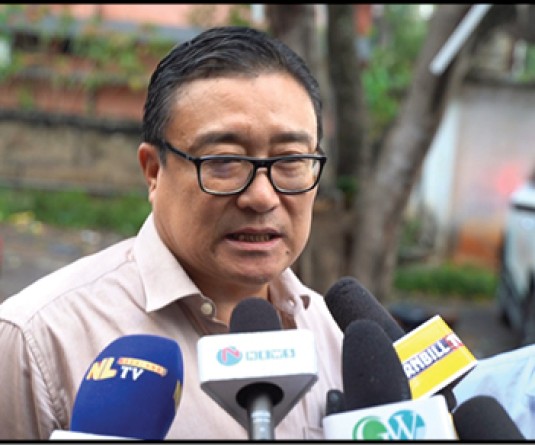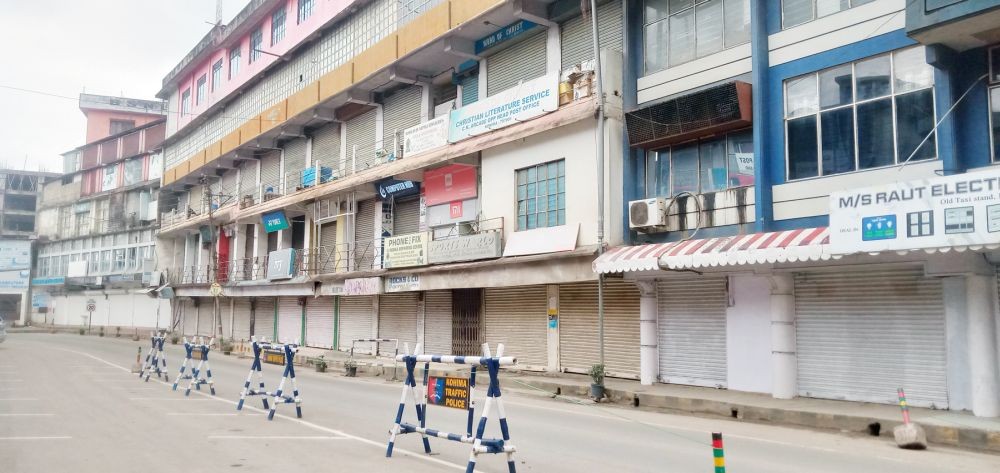
As the dust settles, here is a look at the factors that defined the February uprising that shook the State
Vibi Yhokha
Kohima | February 27
“There is a breaking point which ultimately leads to revolution when the gap between the haves and the have-nots increase. We are almost reaching that breaking point.” These words of premonition came from an IAS officer and DC Dimapur, Kesonyü Yhome while addressing a students’ conference (Angami Students’ Union 26th biennial conference) in March 2015.
Nagaland experienced near breaking point in February 2017 as agitated masses took to protests in almost all the districts in the State following the abrogation of the January 30 agreement by the Nagaland Government to postpone the Urban Local Bodies (ULB) elections.
On January 31, when news reached the people that the Government had gone back on their words and decided to conduct the ULB elections in districts where there were no oppositions, angry protestors marched to the Chief Minister’s private residence to vent their resentment. In the follow-up violent incident outside the CM’s residence, two youth-Khriesavizo Metha and Bendangnunsang Longkumer fell to bullets in an alleged police firing.
The death of the two youth figuratively turned the tide of the protest against the ULB election into a volatile uprising which turned into what the JCC and NTAC termed as a “people’s movement.” What followed was the imposition of weeks of statewide bandh, riots and vandalism on government properties and the demand for the CM to step down on moral grounds.
Women reservation the core issue?
Advisor to Naga Mothers’ Association (NMA) Dr Rosemary Dzüvichü, who have been in the eye of the storm insist that there is no denying that women reservation was a core issue of the protest against the ULB elections.
“Looking back, the core issue was definitely women’s reservation, no matter what kind of justification is given out now. That is the most unfortunate part of it. We had the whole world watching us,” Dr Dzüvichü maintains.
Yet there are critical undercurrents, which cannot be overlooked like land taxation, growing resentment against government over the years, the growing disparity of the rich and poor in Naga society and yes, the consequences of an opposition-less government.
Many assert that the movement was an outburst of a long, accumulated and pent up frustration of the Nagas against the ones in power.
Pitfalls of an opposition-less government
The emotions of the people over pulse-less attitude of the opposition-less government who stopped listening should have been a clear read on the face, which however, the people sitting in the power chose to ignore.
Which is clearly why a number of youths had this to say- “The opposition-less government became arrogant, they stopped listening to the people.”
Protest against the ULB elections were a product of a gradual stir against an opposition-less government which failed to raise questions, provide constructive criticism, and where the Nagaland Legislative Assembly was a ‘taken for granted’ session lasting not more than 27 minutes, a youth leader who wished to remain anonymous summed up. “No opposition in the assembly means people feel they are not being heard, so the opposition from the street,” asserts another youth.
Fear of intrusion on the Naga system
“If you are to go back to the genesis of the issue, the Naga people are not adverse towards the ULB, the main thing that the Naga people could not accept was that the Nagaland Municipal act violate the Article 371A,” states Dr. P. Ngully, a psychiatrist and a NTAC representative.
According to Dr Ngully, reservation can be discussed within the Naga realm and not under the Indian Constitution while adding that another factor was the top down approach taken by the government, which eventually became a conflict between the “top down and the bottom up.”
Angami Youth Organization (AYO) president Neinguvotuo Krose says the boycott of ULB election was to demand from the government to give some space and review the act again-review as per the suitability and convenience of Nagaland state and only after that hold the election. “Otherwise we are not against the women reservation,” Krose claims. Despite the government agreeing in principle, there was no written assurance on the removal of the clause of the land tax in the act, Krose also points out.
Growing resentment against government & civil societies
In the recent years, particularly 2016, Nagaland had witnessed protests against issues ranging from nonpayment of teachers’ salaries, backdoor appointments to fuel adulteration. Dr. Nuglly believes these factors started affecting people’s beliefs, in themselves and in the society.
“Fuel adulteration, PDS scam, no salary and when people protested for their rights, their voices were drowned with water cannons. This has led people to come out and say enough is enough. When the resentment and problems emerged, the government failed to address them and eventually the problems were swept under the carpet,” says Dr. Ngully.
“Had the TR Zeliang government addressed these accumulated problems, the riots and protests would not have emerged.”
There is also a growing resentment among the public against the supposedly ‘voice of the people’ civil societies for alleged ties with the people in power. This resentment, mostly coming from the young generation is seen in bitter statements/outburst expressed in social media forums and discussion.
“The NMA, Naga Hoho, NSF, were all working closely with the government,” a disenchanted youth points out. “JAWCR failed to create consciousness – it is a very elite movement in the sense it never really cared about the common women,” is the utterance of another youth.
The political factor
Despite denial of political influence and continuous affirmations of remaining apolitical, the political rifts within NPF remained a complication in the movement, where several protestors included supporters of a group.
“Political opponents definitely took full part in the protest,” is the simple response from Dr Dzüvichü. On the other hand, Dr. Ngully denies there was any political factor while claiming that ‘if such a factor is there, there cannot be a spontaneous Naga response like this.’ He says, “When life is lost … all these rights does not matter. These rights are necessary only when life is preserved. That was the reason for which the movement took a different turn for the Nagas.”
According to a youth leader, since the Naga community is a small community, the influence of politics is bound to happen.
Krose feels that political parties did try to take the advantage of the situation. “We made a decision not to let anybody politicize the issue because this issue is for the cause of the Nagas,” he maintains. Notwithstanding the different assertions, the political game play that ensued for the chair of the Chief Minister in the corridors of the Nagaland Legislative Assembly can be construed as a testimony in itself.
Now as the dust settles with normal life restored following the resignation of TR Zeliang, the new Chief Minister, Dr Shürhozelie Liezietsu has a series of task on his hands; the most important being – to address immediate public concerns and aspirations before it reaches breaking point.




